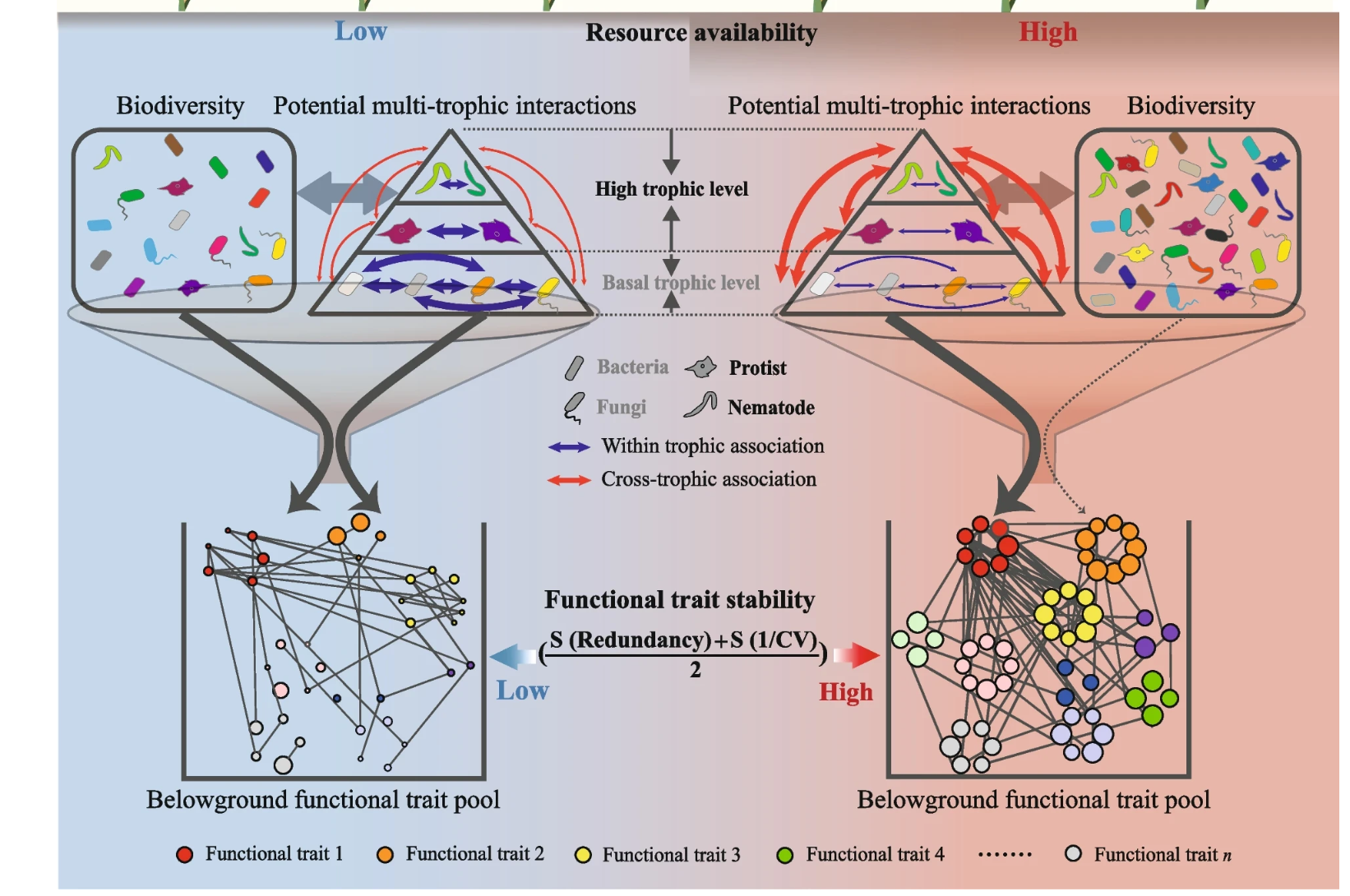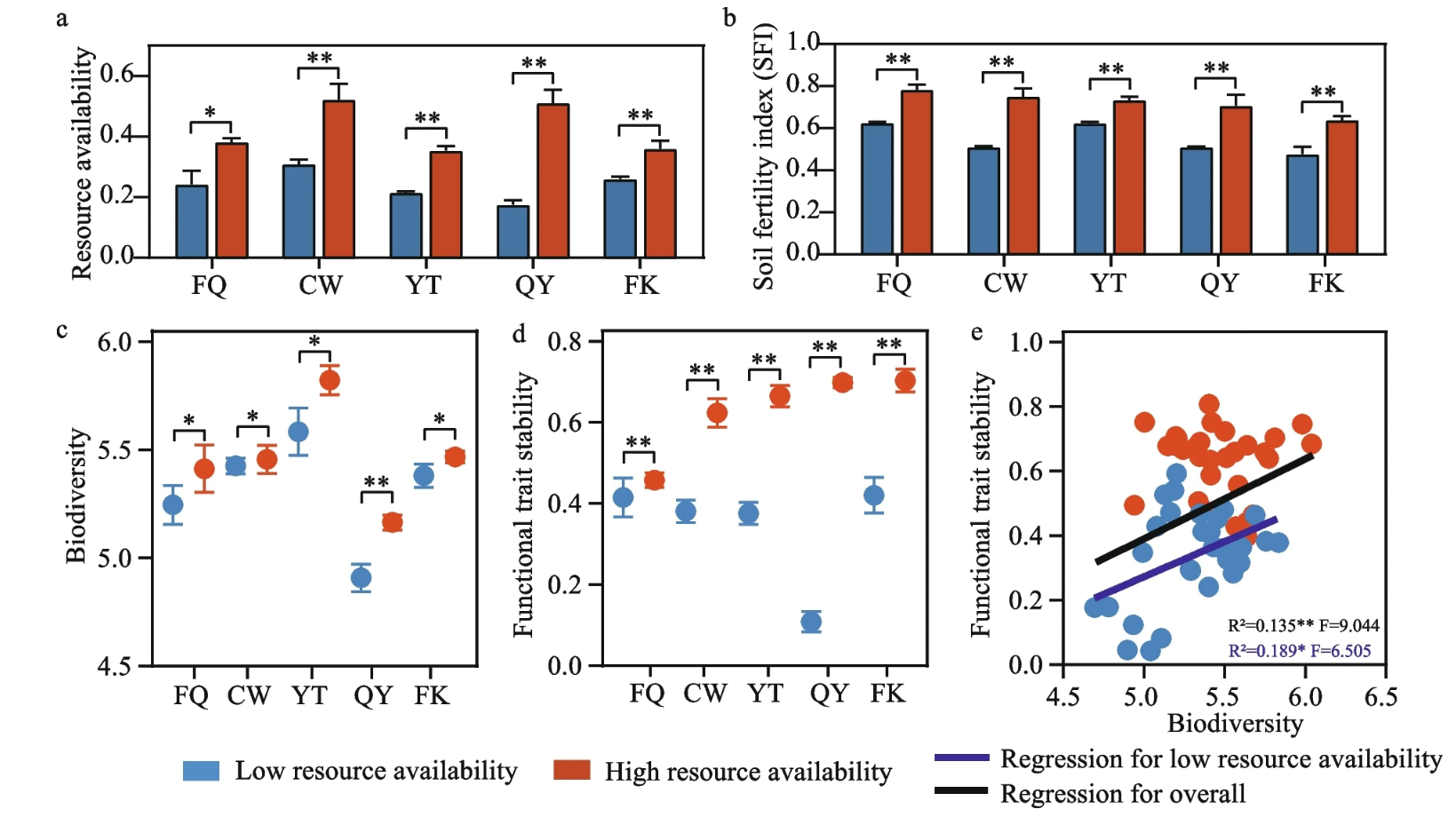Resource-dependent biodiversity and potential multi-trophic interactions determine belowground functional trait stability
Fig1. The composite resource availability indicator (CRAI), soil fertility index (SFI), biodiversity, functional trait stability, and their relationships between low and high resource availability environments. a The differences of CRAI between low and high resource category at each sampling site. b The differences of SFI between low and high resource environments at each sampling site. c, d Comparisons of biodiversity and functional stability at each sampling site. Asterisks denote significant differences between metrics for low and high resource availability soils within each site (n=6) (Wilcoxon rank-sum test, *, P<0.05; **, P<0.01). e The linear relationships between belowground biodiversity and functional trait stability. The blue and black solid lines represent the significant relationships in low-resource sites and all sampling sites, respectively. No significant relationship was found in high resource availability soils

Fig2. Schematic diagram of the potential regulation of belowground biodiversity and potential multi-trophic interactions to functional trait stability in low and high resource environments. Under the low resource condition, the biodiversity and species associations between the same trophic levels jointly affect the functional trait stability; while under the high resource condition, cross-trophic associations determine the functional trait stability. The boxes under the arrows indicate the functional trait pool. Circles with different colors indicate different functional traits. The size of the circle represents the coefficient of variation (CV) of the functional trait. The larger the circle, the greater the 1/CV. 1/CV is obtained by the ratio of the mean (μ) to the standard deviation (σ) of frequency of every functional trait. The larger the average value of standardized redundancy and 1/CV, the greater connectivity and stability of the functional traits
Background
For achieving long-term sustainability of intensive agricultural practices, it is pivotal to understand belowground functional stability as belowground organisms play essential roles in soil biogeochemical cycling. It is commonly believed that resource availability is critical for controlling the soil biodiversity and belowground organism interactions that ultimately lead to the stabilization or collapse of terrestrial ecosystem functions, but evidence to support this belief is still limited. Here, we leveraged field experiments from the Chinese National Ecosystem Research Network (CERN) and two microcosm experiments mimicking high and low resource conditions to explore how resource availability mediates soil biodiversity and potential multi-trophic interactions to control functional trait stability.
Results
We found that agricultural practice-induced higher resource availability increased potential cross-trophic interactions over 316% in fields, which in turn had a greater effect on functional trait stability, while low resource availability made the stability more dependent on the potential within trophic interactions and soil biodiversity. This large-scale pattern was confirmed by fine-scale microcosm systems, showing that microcosms with sufficient nutrient supply increase the proportion of potential cross-trophic interactions, which were positively associated with functional stability. Resource-driven belowground biodiversity and multi-trophic interactions ultimately feedback to the stability of plant biomass.
Conclusions
Our results indicated the importance of potential multi-trophic interactions in supporting belowground functional trait stability, especially when nutrients are sufficient, and also suggested the ecological benefits of fertilization programs in modern agricultural intensification.
Source: Microbiome


